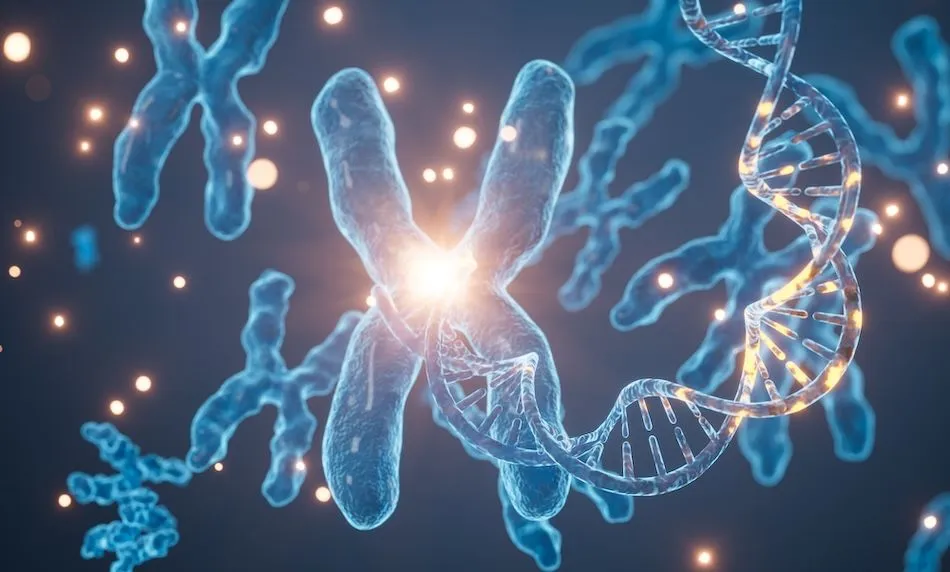ASH 2023: Bispecific Therapy for High-Risk Smoldering Myeloma

For patients with relapsed/refractory multiple myeloma patients, immunotherapy continues to be a favorable treatment option. B-cell maturation antigen-directed immunotherapies (BCMA), like the bispecific antibody teclistamab, are very effective therapies.
Although research is being conducted on the use of proteasome inhibitors, immunomodulatory drugs, and anti-CD38 monoclonal antibodies in high-risk smoldering myeloma (HRSMM) patients, until now, the use of bispecific immunotherapy in high-risk smoldering myeloma has yet to be studied.
Studies using lenalidomide and dexamethasone have shown to be of benefit to those with high-risk smoldering myeloma.
At the recent ASH meeting, Omar Needem, MD, at the Dana-Farber Cancer Institute, presented the initial results from the Phase 2 Immuno-PRISM (PRecision Intervention Smoldering Myeloma) trial.
Study Details
The primary objective of the Immuno-PRISM study was to determine how well the bispecific antibody teclistamab performs compared to the standard treatment of lenalidomide and dexamethasone in achieving a complete response in high-risk smoldering myeloma patients.
The trial has several secondary objectives, including:
- Evaluating progression-free survival (PFS), how long the patients remain free of disease progression or worsening
- Measuring overall response rate (ORR), the percentage of patients who experience a partial or complete response to the treatment
- Minimal residual disease (MRD) negativity rates, the presence or absence of residual disease at a very low level after treatment
- Monitoring the safety of the treatments, including any adverse effects or complications
- Studying how the body absorbs, distributes, metabolizes, and excretes teclistamab
Other aspects that were taken into consideration and require further investigation are:
- Mass spectrometry quantification of M protein, which explores the use of mass spectrometry to measure abnormal proteins associated with myeloma
- Understanding how myeloma cells change over time at a molecular level
- Identifying markers in the immune system that may indicate a positive response to treatment
The trial was a multiple-arm randomized study. The first report consisted of 19 participants. Twelve participants received teclistamab, and seven received the current standard of care combination, lenalidomide, and dexamethasone.
Patients who qualified for this trial were determined to be high-risk smoldering myeloma patients through some or all of the following measures:
- The Mayo 20-2-20 Model
- International Myeloma Working Group risk score of 9 or greater
- a high-risk diagnosis through PETHEMA criteria
- evolving disease type
- high-risk FISH abnormalities
Study Methods
To begin the study, the patients underwent step-up dosing of teclistimab to see how they reacted to the medication. This is the same dosing protocol given to active myeloma patients receiving teclistimab.
In this particular trial, All patients received 2 step-up doses of teclistamab. Patients received a dose lower than the recommended phase 2 dose in the safety run-in. If no dose-limiting toxicities were observed, the next arm received the recommended phase 2 dosage of teclistamab.
The treatment duration was 24 cycles. All eligible patients underwent stem cell collection after four cycles of therapy.
Study Results
The 19 participants (at the time of data cut-off) were followed for six months. There were more males than female participants all averaging around age 59. Approximately 64% of them had high-risk cytogenetics, making the disease more challenging to treat.
In the safety check phase, where a small portion of the teclistamab arm was tested, no major problems were seen. In the group getting teclistamab, a few participants experienced manageable side effects, including low blood cell counts and liver issues.
Remarkably, all participants in the teclistamab arm responded positively to the treatment. Some even had a complete response, indicating no detectable evidence of disease. In the arm getting the standard treatment (lenalidomide and dexamethasone), not everyone responded as well with only a 66% overall response rate.
Conclusion
This study data shows a 100% overall response rate for high-risk smoldering patients who received the bispecific therapy teclistamab.
To date, eight patients in the teclistamab arm show no signs of smoldering myeloma and are minimal residual disease negative (MRD-).
There were even significant improvements in the safety profile when comparing relapsed/refractory patients receiving teclistimab to high-risk smoldering patients, possibly indicating that earlier administrations prevent significant side effects among myeloma patients.
Teclistamab seems to be promising for high-risk smoldering myeloma, with good response rates and manageable side effects. However, it's important to note that the number of patients participating in this trial is quite small, and a larger representation is needed to see if the overall response rates continue to be as successful among the high-risk smoldering patient population.
The study is currently enrolling more candidates and additional arms will be added to the study.
ASH 2023 Resources
Would you like to watch ASH 2023 myeloma research interviews from the investigators themselves? Click "ASH 2023" here: HealthTree University Conference Coverage
To read other ASH 2023 articles, click here: HealthTree 2023 ASH Articles
For patients with relapsed/refractory multiple myeloma patients, immunotherapy continues to be a favorable treatment option. B-cell maturation antigen-directed immunotherapies (BCMA), like the bispecific antibody teclistamab, are very effective therapies.
Although research is being conducted on the use of proteasome inhibitors, immunomodulatory drugs, and anti-CD38 monoclonal antibodies in high-risk smoldering myeloma (HRSMM) patients, until now, the use of bispecific immunotherapy in high-risk smoldering myeloma has yet to be studied.
Studies using lenalidomide and dexamethasone have shown to be of benefit to those with high-risk smoldering myeloma.
At the recent ASH meeting, Omar Needem, MD, at the Dana-Farber Cancer Institute, presented the initial results from the Phase 2 Immuno-PRISM (PRecision Intervention Smoldering Myeloma) trial.
Study Details
The primary objective of the Immuno-PRISM study was to determine how well the bispecific antibody teclistamab performs compared to the standard treatment of lenalidomide and dexamethasone in achieving a complete response in high-risk smoldering myeloma patients.
The trial has several secondary objectives, including:
- Evaluating progression-free survival (PFS), how long the patients remain free of disease progression or worsening
- Measuring overall response rate (ORR), the percentage of patients who experience a partial or complete response to the treatment
- Minimal residual disease (MRD) negativity rates, the presence or absence of residual disease at a very low level after treatment
- Monitoring the safety of the treatments, including any adverse effects or complications
- Studying how the body absorbs, distributes, metabolizes, and excretes teclistamab
Other aspects that were taken into consideration and require further investigation are:
- Mass spectrometry quantification of M protein, which explores the use of mass spectrometry to measure abnormal proteins associated with myeloma
- Understanding how myeloma cells change over time at a molecular level
- Identifying markers in the immune system that may indicate a positive response to treatment
The trial was a multiple-arm randomized study. The first report consisted of 19 participants. Twelve participants received teclistamab, and seven received the current standard of care combination, lenalidomide, and dexamethasone.
Patients who qualified for this trial were determined to be high-risk smoldering myeloma patients through some or all of the following measures:
- The Mayo 20-2-20 Model
- International Myeloma Working Group risk score of 9 or greater
- a high-risk diagnosis through PETHEMA criteria
- evolving disease type
- high-risk FISH abnormalities
Study Methods
To begin the study, the patients underwent step-up dosing of teclistimab to see how they reacted to the medication. This is the same dosing protocol given to active myeloma patients receiving teclistimab.
In this particular trial, All patients received 2 step-up doses of teclistamab. Patients received a dose lower than the recommended phase 2 dose in the safety run-in. If no dose-limiting toxicities were observed, the next arm received the recommended phase 2 dosage of teclistamab.
The treatment duration was 24 cycles. All eligible patients underwent stem cell collection after four cycles of therapy.
Study Results
The 19 participants (at the time of data cut-off) were followed for six months. There were more males than female participants all averaging around age 59. Approximately 64% of them had high-risk cytogenetics, making the disease more challenging to treat.
In the safety check phase, where a small portion of the teclistamab arm was tested, no major problems were seen. In the group getting teclistamab, a few participants experienced manageable side effects, including low blood cell counts and liver issues.
Remarkably, all participants in the teclistamab arm responded positively to the treatment. Some even had a complete response, indicating no detectable evidence of disease. In the arm getting the standard treatment (lenalidomide and dexamethasone), not everyone responded as well with only a 66% overall response rate.
Conclusion
This study data shows a 100% overall response rate for high-risk smoldering patients who received the bispecific therapy teclistamab.
To date, eight patients in the teclistamab arm show no signs of smoldering myeloma and are minimal residual disease negative (MRD-).
There were even significant improvements in the safety profile when comparing relapsed/refractory patients receiving teclistimab to high-risk smoldering patients, possibly indicating that earlier administrations prevent significant side effects among myeloma patients.
Teclistamab seems to be promising for high-risk smoldering myeloma, with good response rates and manageable side effects. However, it's important to note that the number of patients participating in this trial is quite small, and a larger representation is needed to see if the overall response rates continue to be as successful among the high-risk smoldering patient population.
The study is currently enrolling more candidates and additional arms will be added to the study.
ASH 2023 Resources
Would you like to watch ASH 2023 myeloma research interviews from the investigators themselves? Click "ASH 2023" here: HealthTree University Conference Coverage
To read other ASH 2023 articles, click here: HealthTree 2023 ASH Articles

about the author
Valarie Traynham
Valarie Traynham has been a myeloma survivor since 2015. Wanting to be a source of support, provide patient education and encouragement to help others along their myeloma journey, she is a volunteer myeloma coach, myeloma support group leader and patient advocate. She enjoys being outdoors, reading, and trying new recipes.
More on Conferences
Trending Articles




Get the Latest Multiple Myeloma Updates, Delivered to You.
By subscribing to the HealthTree newsletter, you'll receive the latest research, treatment updates, and expert insights to help you navigate your health.
Together we care.
Together we cure.
3x Faster.









